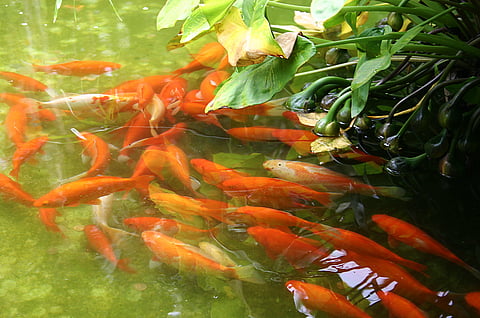
- Topics
- Feature
- Opportunities & Events
- About
- Hindi Portal
- Data
- Topics
- Feature
- Opportunities & Events
- About
- Hindi Portal
- Data

Freshwater ecosystems worldwide are declining
Thirty five percent of wetland area made up of peatlands, marshes, swamps, lakes, rivers and pools etc has been lost between 1970 and 2015, which is three times faster than that of forests, globally. Of the remaining wetland habitats, 65 percent are under moderate-to-high levels of threat and 37 percent of rivers over 1,000 km are no longer free-flowing over their full length.
Freshwater supports over 1 percent of known species that include around one-third of vertebrates and one-half of fishes, while only covering less than 1 percent of the surface of the Earth. Freshwater diversity not only provides essential ecosystem services such as nutrient cycling, flood control and climate change mitigation, but also functions as an indicator of wetland quality, and supports the culture, economy and livelihoods of billions of people worldwide.
Inspite of the important role of biodiversity in sustaining freshwater ecosystems, freshwater is still not given the same priority as the terrestrial and marine ecosystems in environmental governance.
Approaches at restoring and conserving freshwater ecosystems continue to focus on abiotic factors such as water use and quality. Data and assessments on freshwater fishes and invertebrates also continue to receive little political will or attention, and very little importance in terms of investments and need urgent attention, argues this study titled 'One-quarter of freshwater fauna threatened with extinction' published in Nature..
What did this global freshwater fauna assessment find
The study conducted a global freshwater fauna assessment for the IUCN Red List of Threatened Species covering 23,496 decapod crustaceans (crabs, lobsters, crayfish, shrimps and prawns), fishes and odonates (dragonflies and damselflies) and found that:
One-quarter of freshwater fauna are threatened with extinction
Pollution is the most important factor leading to this decline
Pollution is the most important factor affecting freshwater animal decline followed by dams and water extraction, land-use change and associated effects from agriculture (from subsistence to agro-industry scales, excluding aquaculture), and invasive species and disease. Close to one-fifth of threatened freshwater species have been found to be affected by climate change and severe weather events.
Fish face the highest threats
Pollution has been found to act as a key threat to fishes, mainly due to agricultural and forestry effluents followed by domestic and urban waste waters, and industrial and military effluents, including seepage from mining and oil exploration.
Water management methods that rely on dams and unsustainable water extraction practices is another key threat to fishes as dams can block migration routes and cause habitat degradation and loss by affecting downstream hydrology and flow regime, altering sediment flux and restricting the flow of upstream riverine habitat.
Expanding agriculture, water logging and urban development and pollution have been found to be top threats for survival of dragonflies and damselflies while crabs, lobsters, crayfish, shrimps and prawns are finding it difficult to survive mainly due to pollution by agricultural and forestry effluents that include nutrient loads, herbicides and pesticides, and sedimentation and domestic and urban waste waters that include runoff and sewage.
Permanent lakes, springs and oases have been most affected
Most extinctions of freshwater species have happened in permanent lakes and from springs and oases as species endemic to these habitats have no way to escape from threats such as invasive species, water extraction and harvesting.
Western ghats in India are one of the top hotspots showing greatest threat
Freshwater species are found to be the highest in the biodiversity hotspots in the tropics such as the Amazon basin in South America; western, central and eastern Africa and tropical Asia from southern India and Sri Lanka through Sundaland to coastal New Guinea. Among the biodiversity hotspots, Lake Victoria (Kenya, Tanzania and Uganda), Lake Titicaca (Bolivia and Peru), Sri Lankas Wet Zone and Western Ghats (India) show the greatest threatened freshwater species.
There is a need to act urgently
The study argues that there is an urgent need to act quickly to address threats to prevent further species declines and losses:
Through giving importance to biodiversity in water development and governance initiatives
Through targeted actions in terms of changes in water management practices at a catchment scale along with species-specific site-based actions
Including solution focused approaches through collaborations such as using nature-based solutions that benefit biodiversity as well as human well-being.
Increasing investments on quantitative research and monitoring of freshwater species
Including better monitoring mechanisms to increase the evidence base for the efficacy (or not) of particular actions for tackling threats and improving the status of species to better guide future action.
Increased involvement of stakeholders beyond conservation scientists (for example, natural resource managers, infrastructure developers and local communities) and improved regulation to increase the volume of data, as well as the relevancy and legitimacy of the data for all stakeholders.
Using citizen science approaches as potential solutions taking into consideration the high need for data, but low availability of financial resources.
Newer survey techniques need to be investigated, such as use of environmental DNA.